 With the skeleton of the garden in trees, shrubs and perennials now, in its sixth year, well established and growing great guns, attention this spring is being paid to filling in some empty spots, introducing some new inhabitants, lengthening and broadening the flowering that occurs, and venturing into a little vegetable gardening. Most of the new planting took place this week, now that night frost has (one hopes and trusts) moved off the horizon, with a couple largely innocuous parting shots just as the cherry orchards budded out. That Jack Frost is quite the mischief-maker, isn't he, the spoiler at the party, the incorrigible delinquent of Mother Nature's household.
With the skeleton of the garden in trees, shrubs and perennials now, in its sixth year, well established and growing great guns, attention this spring is being paid to filling in some empty spots, introducing some new inhabitants, lengthening and broadening the flowering that occurs, and venturing into a little vegetable gardening. Most of the new planting took place this week, now that night frost has (one hopes and trusts) moved off the horizon, with a couple largely innocuous parting shots just as the cherry orchards budded out. That Jack Frost is quite the mischief-maker, isn't he, the spoiler at the party, the incorrigible delinquent of Mother Nature's household.Other than a double white peony and a pinky-winky ever-blooming hydrangea, which will be planted as soon as they arrive at the cautious, previously frostbitten local nursery, all the planting done thus far and planned for this spring is in seed. Seeds are so inexpensive, compared to starter plants, and they seem to produce stronger, more viable plants, more able to hang on through the trials of their first summer, thrive and settle in for multi-year lifespans than is the case with scrawny or over-fertilized (i.e. hyperactive), often root-bound, sometimes sickly hothouse seedling plants. Some seed-grown perennials may not flower the first year, but that's fine if it means they are building strong root stock to keep them active in the garden for many repeat appearances.
Seed packet and live-plant displays always catch my eye and beckon me to them, whether in the village grocery, hardware store, nursery, or wherever, I'm an addict for them with little-to-no resistance. No doubt, once the nurseries are filled to overflowing with live plants, I'll succumb to some of their siren calls and splash out with more yarrows and bee balms, maybe a few additional bleeding hearts, columbines or irresistible delphiniums. For now, my gardening jones has been fed by the twenty or so seed packets emptied into the soil.
An unpleasant reminder of the national economic pallor and downsizing was revealed in discovering that commercial, standard brand seed packets this year held about half the amount of seed offered in past years. This proved to be the sad case for some half-dozen different big-name seed brands selected. Evidently penny-pinching and cost-cutting is reaching its hatchet even into the gardening industry. The one exception to this cutback phenomenon was from Botanical Interests (www.botanicalinterests.com), whose packets yielded not the mere dozen or so seeds of the big companies, but palms full of probably three-to-four dozen seeds per pack. Botanical Interest packets also promise that all seeds are untreated with synthetic chemicals and contain no genetically modified seed, so they take first place in the competition for my garden dollars.
What went into the ground recently were rudbeckia Irish Eyes, a member of the black-eyed Susan family with a soft celery green, rather than chocolate center, stocks, mixed asters, ganzia daybreak (a compact flower similar to a strawflower), lupines, delphinium Pacific giants, bachelor buttons and double poppies. All except the poppies, chosen because there's no such thing as too many of these pretty comers, swear they will flower mid-summer into the fall. With lots of spring-flowering bulbs and plants already in place, summer and fall bloomers are what the garden wants more of.
Chives and radish also got sown, the chives, in all honesty, for their handsome purple flowerheads, the radishes as the start of the vegetable plot. To be added to this sunny spot in the backyard once the nights stay around and above the 60-degree mark will be bell peppers, cucumbers and sweet basil. The only vegetable (actually a fruit) attempted before was tomato plants, which shriveled in the withering summer sun and could not get their thirst quenched sufficiently, despite daily watering. This year's effort is to see if a few of the vegetables that are routinely purchased on every week's trip to the grocer can be grown at home. Vegetables are still (fingers crossed) relatively inexpensive to buy and readily available at farmer's markets, so there hasn't been much reason to self-grow them, but this year the idea of being able to pick fresh, wax and pesticide-free peppers, radishes and cucumbers from the backyard just really appealed.
All the seeds were planted in toppings of composted cow manure, the absolute best growing medium for any plant life on this green earth. Now come the tinkering, waiting weeks, with daily sprinklings for all from the watering can, except when given a day off by rainfall. Oh happy day, some of the rudbeckias actually have sprouted already, after only about seven days in the ground. It seems from past experience that maybe about one-third or at very best one-half of seeds sown will deign to put up green sprouts. If a third of the seeds put in this spring lift their fingers into the light of day, all will be well and smiles shall break forth and the gardener will raise a glass of Cabernet in toast from her repose on the Adirondack chair, grateful for the sprouting proof that perhaps she really does know a thing or two about raising a hale and bonny garden.
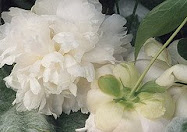
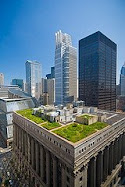

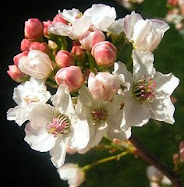
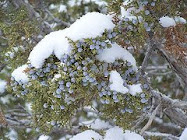

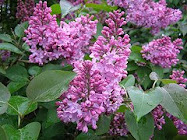
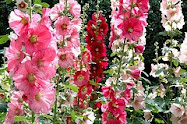
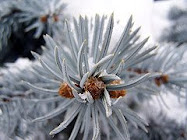
3 comments:
I too noticed the reduced number of seed in packets this year. I haven't planted too many seeds in recent years and I thought I might be misremembering. I have extended two garden beds, and enlarged the vegetable garden - not because of economics - just the desire for more fresh fresh vegetables. Hence more seeds.
I'd just like to have some of those peppers.
all comers shall be welcome to the produce from my garden, and especially you, Elias.
Post a Comment